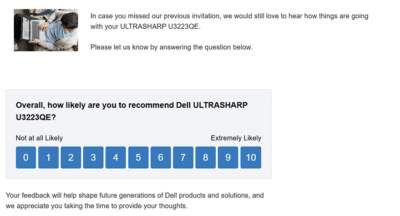Overview
The iPod and Spotify changed how we listen to music, but what did they both share that changed us and did we really change? That's the topic for today.
Welcome to Persuasive User Experiences for Growth, where I talk about how you can do one thing per episode on how to improve your growth so you can leapfrog your competition.
Same-same vs Different
On the surface, they both play music. They were both successful, but they couldn't be more different. The iPod was a physical device. You held it in your hand. Spotify is a piece of software that sits on your computer or on your phone with an iPod. When you bought a song, you owned it for life with Spotify, it's here today, gone tomorrow.
With the iPod, you could play it anywhere. You didn't need the internet. What Spotify you do well, you can kind of do without it for a while, but you really do need the internet. So on the surface, they're both similar but also quite different.
QUESTION
But what was common between them that helped them become so successful?
History of MP3 Players
Let's take a walk back memory lane. When the iPod first came out, there were many MP3 players around, but what the iPod did with its clickety wheel was make it really fast and easy to get to the song you were afteror the album you were after. So when you wanted to hear a song or an album, it was really fast and.compared to all the other MP3 players.
We had to navigate and click multiple buttons and push things up and down until you got to that particular song. This thing was such a joy to use and I had a Rio Karma and I eventually, I dished that for an iPod.
RED HERRING
So at this point you're thinking what's common is usability, of course, that's.not it.
When Spotify launched iTunes for was a pretty usable product. It was easy to use. You could buy a song, download it, sync it. It worked great, as did Pandora. It was really easy to use and listen to music on the web. But Spotify still changed everything and it comes down to our underlying behavior.
Visualize
Here's a five second exercise for you. Think of a song or an album that you want to hear right now. . And now that you have that song or album in your head, what do you want to do? You want to listen to it right now. You don't wanna spend the time, forget the money of finding it, downloading it, syncing it, playing it.
You just want to listen to it right now, and that's what Spotify excels at. What Spotify and what the iPod didwas fulfill our need for instant gratification. When we want something, we want it right now.
The real WHY
So while they were completely different, they fulfilled that same underlying behavior. Instant gratification to listen to a song.
TAKEAWAY
So what does it mean?spend the time to figure out why your prospects or customers choose products like yours. What underlying goal or behavior or trigger is driving that motivation.
And once you do, you'll be able to always adapt to changes in technology or the market.
Learn from Jeff Bezos
This is best exemplified by a quote from Jeff Bezos from Amazon. He was asked, how is Amazon going to keep innovating? How is Amazon gonna keep growing and maintain its position as a leader? And he said, our customers want two things, the best price. And being able to get that product in their hands as quickly as possible, as long as we keep doing that, we don't need to change anything.
SUMMARY
From the comparison of iPod and Spotify, we learn the importance of understanding the underlying motivations of consumer behaviors when designing our products.
Instant gratification is a recurring theme in the success of these two devices, as they both cater to the desire of consumers to access their favorite music quickly and conveniently.
Action Steps:
- Identify key customer behaviors and motivations behind your product's usage.
- Study similar products that have been successful over a long-term and match their features that to underlying behavior.
- Conduct in-depth research and gather data on your customer's decision-making processes.
- Analyze the collected data to identify areas for improvement within your product or service to cater to customer's ever-changing needs.
- Develop and implement strategies to address the identified areas and continually monitor their impact on the overall customer experience.





Comments
Comment policy: We love comments and appreciate the time that readers spend to share ideas and give feedback. However, all comments are manually moderated and those deemed to be spam or solely promotional will be deleted.